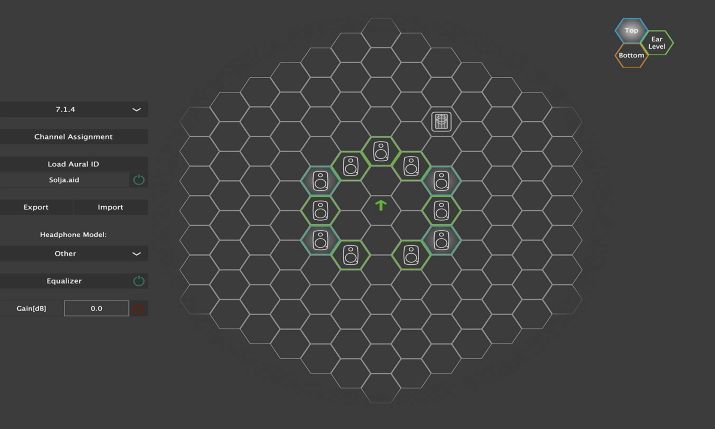Audio insider: Can you really monitor reliably with headphones?

Genelec has created a new plug-in for its Aural ID for a reliable and personalised headphone listening experience
By Howard Jones, communications director, Genelec
While we at Genelec firmly believe that in-room loudspeaker monitoring is unrivalled during the recording and mixing process, high quality headphones play an important role as a supplementary monitoring tool. Here we’ll explore the ways to bridge the gap between monitors and headphones so that you can seamlessly switch between the two and achieve a more natural, uninterrupted workflow.
Preferred choice
Monitoring using loudspeakers is usually preferred because audio presentations can traditionally only be designed reliably using loudspeaker reproduction. Loudspeakers work together and they also interact with the room, to create the experience of acoustic space and auditory images appearing in the presentation.
When we’re listening to in-room monitoring, the sound radiated by loudspeakers is reflected by the walls and surfaces in the room and arrives at the listener with a slight delay, and from different directions. This reflected sound is called ‘early reflections’. Early reflections contribute to experiencing both a sensation of space and distance from the loudspeakers.

Figure 1 – conventional headphones often fail to provide an accurate audio reference
Headphones are typically used to monitor smaller details in a mix because they can offer excellent signal-to-noise ratio and isolation from in-room background noises, so low-level audio becomes more clearly audible.
For audio professionals, there are all sorts of situations where headphones become really useful; they are ideal when working remotely in ad-hoc environments, for situations where loudspeaker monitoring just isn’t possible, or for those that simply wish to check how their mixes translate to headphones.
But, when headphones are placed over the ears (or inside the ears), the sound is directly delivered into your ears. Then, head-related sound colour changes cannot occur. Also, the headphones on your head always remain at the same location, so it’s no longer possible to use head movements to help with sound source location.
These are the reasons why conventional headphones struggle to provide an accurate reference, since sounds seem to happen ‘inside’ the listener’s head, thereby losing their natural sense of space and direction [see figure 1].
Best of both worlds
If you equip yourself with both neutral, accurate studio loudspeakers and high quality professional headphones (with low distortion, colouration and L/R variation) then that’s an essential starting point.
But to start to really bridge the gap between loudspeakers and headphones, you’ll need to explore the emerging technologies that are able to analyse how you hear sounds from an in-room loudspeaker system, and then start to recreate that same experience via headphones.
The key to these technologies is the head related transfer function (HRTF), which is the way that your head, external ear and upper body affect and colour the audio arriving from all directions. When that effect is modelled and then applied via signal processing to your headphone monitoring feed, then this recreates virtual sound images ‘outside’ your head, and enables you to hear the sound stage again, providing a sense of space and direction similar to that presented by loudspeaker-based monitoring [see figure 2].

Figure 2 – head related transfer function (HRTF) is the way that your head, external ear and upper body affect and colour audio arriving from all directions
The modelling of a listener’s HRTF used to be a very complex and time consuming process, but modern technology has made that process much easier, and there are now options for using both ‘general purpose’ HRTFs (usually created by using a generic dummy head and torso simulator with some further adjustment to better suit the individual user) and completely personal HRTFs which are modelled on the user’s unique physical attributes. The latter method has been a key focus area for us at Genelec in recent years.
Once an HRTF has been modelled, then some headphone monitoring technologies offer a further series of refinements such as compensating for the colouration that headphones will introduce, and for creating, positioning and level-adjusting ‘virtual’ monitors in the headphone mix too. This helps the listener to simulate the layout of their in-room monitoring system and can also allow them to adjust their own orientation in relation to the virtual monitors.
This accurate localisation of sound becomes even more important when working in surround and immersive formats, where the precise placement of sound sources becomes crucial in producing multi-channel mixes that translate consistently to a wide range of playback devices.
There’s no doubt that quality headphones are an important and convenient supplementary monitoring tool for many audio professionals, and the good news is that they now have the potential to become much more trustworthy monitoring companions in the future too!
